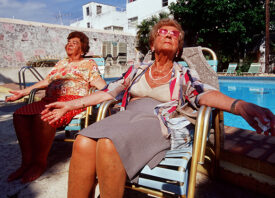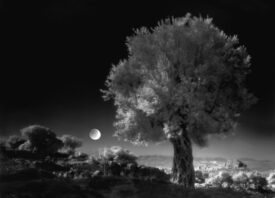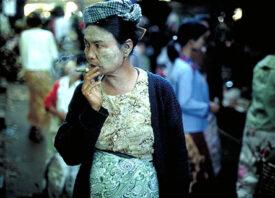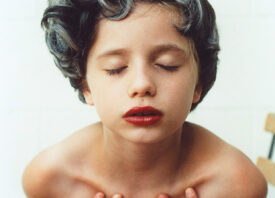Search this site
A Photographer Invites Us Into Dozens of Psychoanalysts’ Offices



Shellburne Thurber remembers the first time she stepped into her therapist’s office: located in a turn-of-the-century brownstone, it offered a view of a busy street lined with cherry trees. It was high above the street, too. As Thurber told her fellow photographer Jess T. Dugan in an interview featured in her latest book, Analysis (Kehrer Verlag), it made her feel like she was in a treehouse.
That brownstone office isn’t one of the interiors featured in Analysis—a collection of photographs made in psychoanalysts’ offices in 1999 and 2000—but Thurber had been working with her therapist when she first embarked on the project. In that sense, her experiences color the work, which began in Buenos Aires with the help of Gela Rosenthal, an analyst who agreed to have her office photographed before introducing Thurber to some of her colleagues in the area.
Thurber continued to photograph analysts’ offices in the Boston area, always without the presence of people—but somehow imbued with the weight of their memories and histories. When entering these spaces, she took a moment to take everything in: her eyes usually settled on significant details right away.
Every psychoanalysts’ office was different, and it’s those contrasts that stand out the most, but there are some recurring themes: photographs and artworks featuring Freud appear multiple times, as do boxes of tissues (Lia Gangitano notes the latter in the book’s introduction).
Throughout, the question of belonging lingers in the background: do these rooms belong to the analyst—the person who’s carefully decorated and curated the space, or to the patient—the person who projects their own experiences onto that space?
Often, these psychoanalysts’ offices are located in the analysts’ homes. But they’re also intensely personal for patients. In an essay for the book, Daniel Jacobs, a Training and Supervising Analyst at the Boston Psychoanalytic Society, writes about his interest in patients’ responses to his office: one patient might find the analysts’ chair to be too close, while another thinks it’s not close enough.
This ambiguity between public and private spaces lies at the heart of Thurber’s work, inviting us, as readers, to make these spaces our own as well. Without any information about the owners or visitors to these rooms, we’re free to project. Look closely, and you might find glimpses of your own past or fantasies.
Thurber made these photographs more than twenty years ago, but in many ways, these photographs feel timeless. Thurber tells Dugan about her choice to photograph these spaces in color: in contrast to Edmund Engelman’s famous pictures of Dr. Sigmund Freud’s couch, she wanted these offices to exist in the present day. Even now, they feel “lived in.”
Although there are no people in the photographs of these psychoanalysts’ offices, they hardly seem empty. Analysis is a book about the human mind—the conscious and unconscious—but it’s also about the connections we make. Thurber has remained friends with some of the analysts whose offices are included in the book. Her own therapist has since passed away, but as she tells Dugan, the work they did together continues as she navigates through life. She dedicates the book to him.







Further reading from Kehrer Verlag:
• Jerry Uelsmann, The Artist Who Turned Photography Upside Down
• A Group Of NYC Girlfriends, Photographed Over 30 Years
• Rescued Chickens at Home with Their People



